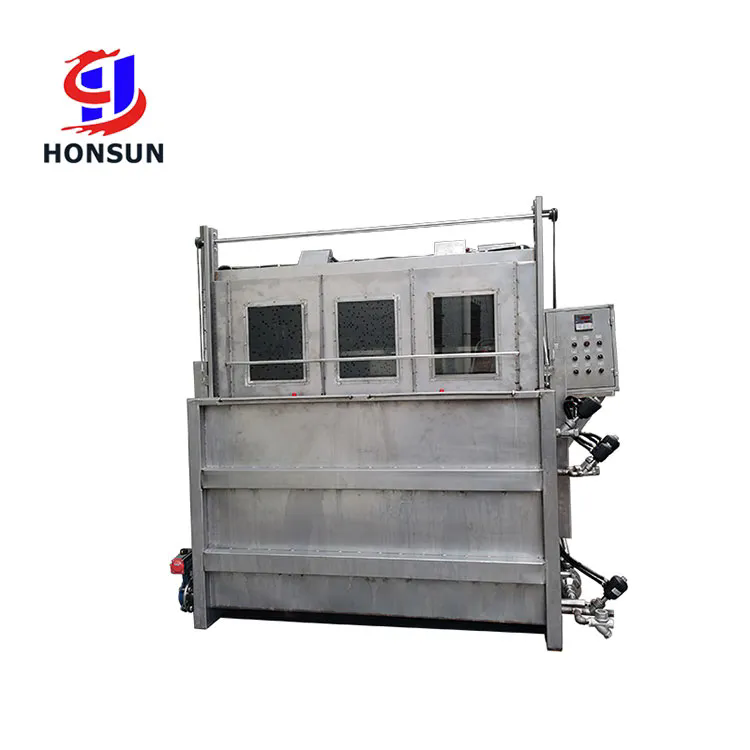The Importance of Rope Dyeing Machines in the Textile Industry
2024-11-01
In the vibrant world of textiles, color plays a pivotal role in defining the aesthetic appeal of fabrics. Among the various processes involved in fabric production, dyeing stands out as one of the most critical stages, especially for products like ropes, threads, and yarns. Rope dyeing machines have become essential in this realm, enabling manufacturers to achieve consistent color application while enhancing efficiency and quality. This blog will explore the significance of rope dyeing machines, their operational mechanisms, and the latest advancements in technology shaping the industry.
Understanding Rope Dyeing Machines
Rope dyeing machines are specialized equipment designed to dye ropes, yarns, and threads in large quantities. These machines are engineered to handle the unique challenges associated with dyeing continuous lengths of material. Unlike traditional dyeing methods, which may involve flat or woven fabrics, rope dyeing machines ensure that every strand receives uniform color distribution.
#Key Components of Rope Dyeing Machines
1. Dyeing Chamber: The dyeing chamber is the heart of the machine where the dyeing process occurs. This chamber is designed to hold the rope or yarn and facilitate the penetration of dye into the material.
2. Circulation System: A robust circulation system ensures that the dye solution is evenly distributed throughout the chamber, promoting consistent color application. This system often includes pumps and piping that facilitate the movement of dye and water.
3. Temperature and Pressure Controls: Precise temperature and pressure control mechanisms are vital for achieving optimal dyeing results. Different dyes require specific conditions for effective application, and modern machines are equipped with digital controls to monitor and adjust these parameters.
4. Drying Unit: After dyeing, the ropes often go through a drying unit to remove excess moisture. This unit helps in fixing the dye and preparing the ropes for subsequent processes.
5. Automated Systems: Many modern rope dyeing machines feature automation for better control and efficiency. Automated loading, unloading, and monitoring systems enhance the operational workflow, reduce labor costs, and minimize human error.
The Significance of Rope Dyeing Machines
The use of rope dyeing machines in the textile industry offers numerous benefits that enhance the quality and efficiency of production:
1. Uniformity and Consistency: One of the primary advantages of rope dyeing machines is their ability to provide uniform dye application. This consistency is crucial in maintaining product quality, especially for applications where color matching is essential.
2. Increased Efficiency: Rope dyeing machines are designed for high-volume production, enabling manufacturers to dye large quantities of material in a shorter timeframe. This efficiency is particularly beneficial for businesses that operate on tight schedules and demand quick turnaround times.
3. Versatility: Modern rope dyeing machines can accommodate various types of dyes and fabrics, making them versatile tools for manufacturers. They can be used for natural, synthetic, and even eco-friendly dyes, allowing for a wide range of applications.
4. Reduced Water Consumption: Advanced rope dyeing machines are engineered to minimize water usage, making the dyeing process more sustainable. They often incorporate recycling systems that allow for the reuse of water in subsequent batches, significantly reducing waste.
5. Enhanced Color Fastness: Properly dyed ropes exhibit better color fastness, meaning they are less likely to fade or bleed during use. Rope dyeing machines ensure that dyes are properly fixed, contributing to the longevity of the product.
Latest Advancements in Rope Dyeing Technology
As the textile industry evolves, so too does the technology behind rope dyeing machines. Some notable advancements include:
1. Digitalization and Automation: The integration of digital technologies allows for precise monitoring and control of the dyeing process. Manufacturers can track dye consumption, temperature, and pressure in real-time, leading to improved efficiency and reduced waste.
2. Eco-Friendly Innovations: There is a growing emphasis on sustainability in textile manufacturing. New rope dyeing machines are being designed to use less energy and water while utilizing biodegradable and non-toxic dyes, aligning with global environmental standards.
3. Smart Technologies: The rise of the Internet of Things (IoT) has led to the development of smart rope dyeing machines that can be remotely monitored and controlled. This connectivity allows manufacturers to optimize processes and respond quickly to any issues that may arise.
4. Research and Development: Continuous research into dye chemistry and application methods is leading to the development of new dyes that require less processing time and deliver superior results. Rope dyeing machines are being adapted to accommodate these advancements.
Conclusion
Rope dyeing machines are indispensable tools in the textile industry, providing manufacturers with the ability to produce high-quality, consistently dyed materials efficiently. As technology continues to advance, these machines will evolve further, offering even greater benefits in terms of sustainability, efficiency, and product quality.
Investing in modern rope dyeing technology is crucial for manufacturers looking to stay competitive in a rapidly changing market. By embracing innovation and sustainability, businesses can enhance their production capabilities while contributing to a more environmentally friendly future in textile manufacturing. Whether for ropes, threads, or other applications, the role of rope dyeing machines will remain vital in shaping the colorful world of textiles.



